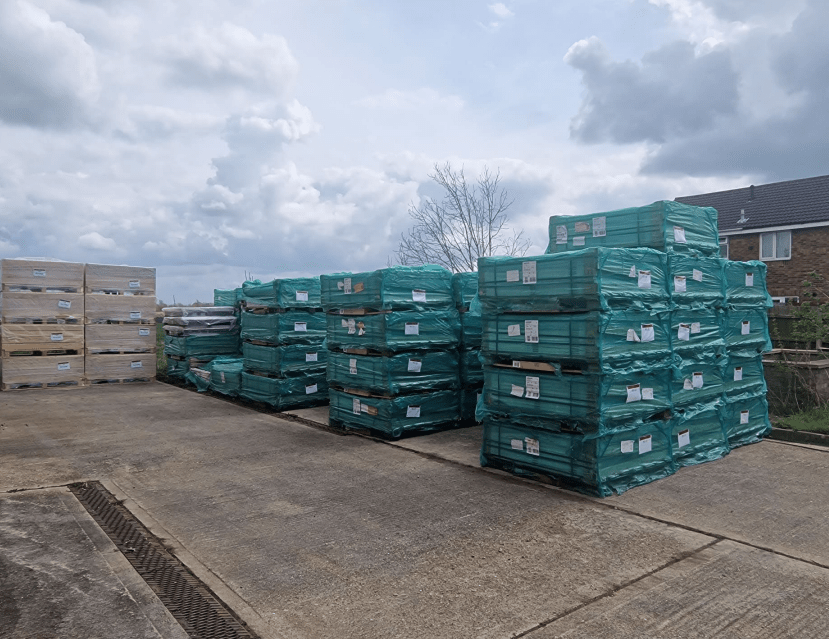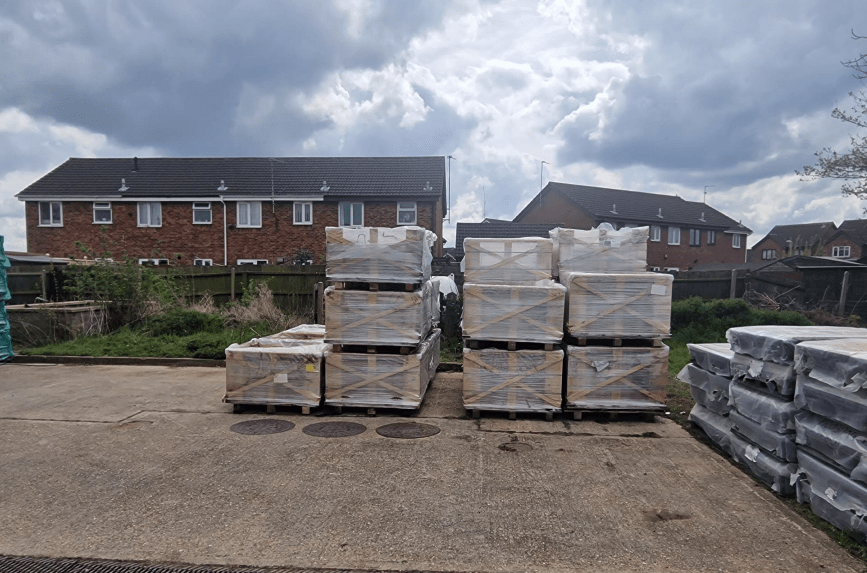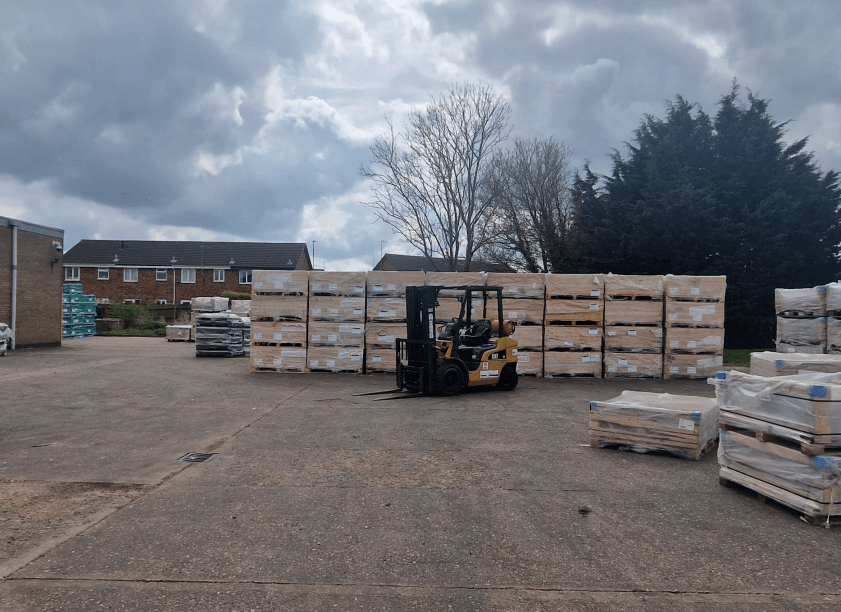Stacked pallets of porcelain tiles outside a Chatteris factory must be removed, says the Planning Inspectorate. Sojoud Zand lost his appeal after Fenland District Council refused to grant planning permission for the pallets to be racked outside his factory at 3-5 Prospect Way.
He wanted to be allowed to use the pallets at the front of the factory for a single row of storage racking and a double row of storage racking.
“One single row and a double row of storage racking has been installed and is in use for storage purposes,” says planning inspector J Pearce. “Another row of racking has been removed. The application is therefore part retrospective.
“For the avoidance of doubt, I shall make my decision against the plans submitted with the application and as listed on the decision notice.”
The inspector said the main issue is the effect of the development on the living conditions of occupants of neighbouring properties, with regard to outlook, privacy, noise, and dust.

“The rows of storage racking are positioned to the side of the building close to the shared boundary with the dwellings at Kingfisher Close,” says the inspector.
“The racking extends across the width of, and is clearly visible from, the gardens of the neighbouring residential properties. The excessive height of the racking, alongside the proximity to the dwellings, results in an overbearing and unneighbourly form of development, which significantly harms the outlook of the occupants of those properties”.
He said Mr Zand has suggested the height of the racking could be reduced and netting installed to screen the racking.
“However, no detailed plans are before me showing such amendments,” says the inspector.
“Furthermore, accepting the principle of such alterations would deprive those who have an interest in the proposal from a chance to comment.”
The inspector noted that CCTV cameras are attached to the racking, including in a position that may allow views beyond the appeal site.

The inspector was advised “that the direction of the camera does not allow for such views. Nonetheless, while there may not be direct views outside of the site, the position and direction of the camera results in perceived overlooking of neighbouring properties.
“The CCTV infrastructure is required for security and insurance purposes, particularly given the historic security issues at the site.
“However, I cannot be certain that there is no suitable alternative position for the cameras, which provides the requisite level of security whilst protecting the privacy of neighbouring residents.”
The inspector says that although related to the lawful use of the site, the position of the racking “increases the activity within the part of the site closest to the neighbouring dwellings.
“The lack of any physical barrier to contain noise and dust, in addition to the increase in activity and excessive height of the racking exacerbates the disturbance experienced by occupants of the neighbouring dwellings.

“No substantive evidence has been provided, in the form of a noise assessment and air quality assessment, to define the noise and dust levels at the site and identify whether any mitigation measures are required as a result of the racking.
“On this basis, I cannot be certain that the development would not have an adverse impact on the living conditions of neighbouring residents in respect of noise and dust.”
The inspector continues: “I conclude that the proposal would have a harmful effect on the living conditions of the occupants of neighbouring properties, with regard to outlook, privacy, noise, and dust.
“The development would help to support an existing business, which has utilised a previously unoccupied site. However, the benefits to the local economy would not outweigh the harm that I have identified.
“Furthermore, I am not persuaded that appropriate storage solutions cannot be provided either elsewhere on the site or in a different form to the current development.
“The proposal would conflict with the development plan as a whole. The other considerations in this case do not indicate that a decision should be made otherwise than in accordance with the development plan. I conclude that the appeal should be dismissed.”
Mr Zoud’s office manager Karen Newell gave evidence to the planning inquiry.
She said one of the complaints that was constantly high-lighted is with the referral to the removal of the trees.
“We never removed any trees and have been informed that some of the neighbours had asked for them to be cut by the previous owners, not by ourselves,” she said.
“So, whilst I sympathise with them that this is a shame that the trees are no longer there and that they would have been a good sight and wind defence, this was not down to us but unfortunately to themselves for asking the previous tenants/owners to trim/remove them. We would have much preferred for them to still be there.
“When we went to inspect the site back in October and November of 2021 and then moving into the site in April 2022, there were no trees or hedgerows.
“Whilst the racking is essential to the business we have in recognition to the concerns of the neighbours, started the process of removing row 4 racking which is closest to the neighbours and to reduce the heights of rows 1 – 3.
“We are also awaiting the delivery of some camouflage covering which would cover the side that the neighbours see, making it look more like a large conifer hedge”.
Fenland planners concluded that the racks were near the neighbouring properties along Kingfisher Close.
“Given this close proximity, the storage racks are highly visible to these neighbouring properties creating significant overbearing and severe visual impacts to the detriment of residential amenity,” said a council planning report.
“The FDC Environmental Health Officer has also confirmed that the noise and dust emitted from the use of these storage racks would constitute a statutory nuisance under the Environmental Protection Act 1990.
“The form of the racking also may lead to unacceptable overlooking of neighbouring private amenity space. The creation of such an unappealing living environment for the neighbouring occupiers would be contrary to the above policies.
“The scale of the storage racks and the nature of the operation is such that the management of dust from the use of the storage racks which travels to the nearby residential properties cannot be reasonably and effectively controlled by condition and the application has failed to provide evidence that such dust can be mitigated against.”























